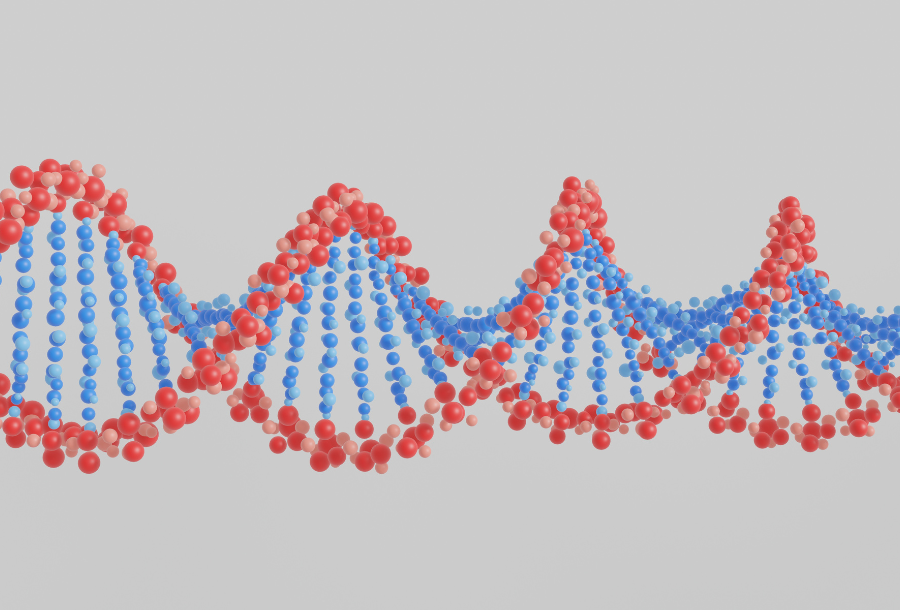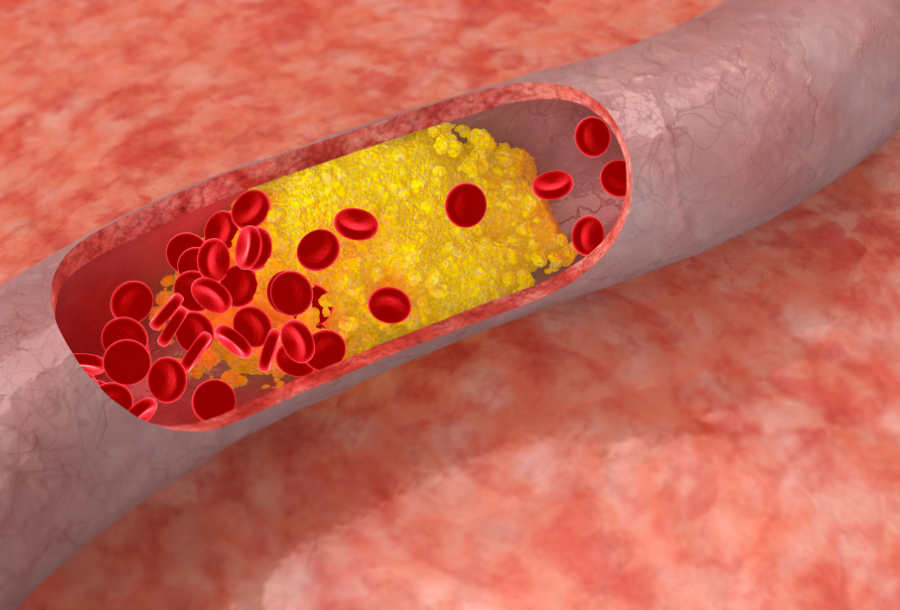.png)
What are the main symptoms of prediabetes?
April 1, 2025
Prediabetes often has no obvious symptoms, but early detection is key to preventing Type 2 diabetes. Here’s what to watch for:
- Increased thirst and frequent urination: High blood sugar causes your kidneys to work harder, leading to dehydration and more bathroom trips.
- Constant fatigue: Insulin resistance prevents your cells from getting enough energy, leaving you feeling tired.
- Blurry vision: High blood sugar can temporarily affect your eyesight.
- Dark patches on the skin (acanthosis nigricans): Common around the neck, armpits, or groin, signalling insulin resistance.
- Slow healing and frequent infections: Elevated blood sugar impairs your body’s ability to heal and fight infections.
Risk factors:
- Family history of diabetes
- Obesity or excess body fat
- Lack of physical activity
- Unhealthy diet
- Poor sleep patterns
- High stress levels
Blood tests like HbA1C, fasting glucose, or glucose tolerance tests can confirm prediabetes. Early action, including losing 5–7% of body weight and exercising 150 minutes weekly, can cut your risk of Type 2 diabetes by up to 58%.
Common prediabetes symptoms
Most people with prediabetes don’t notice any obvious signs. However, knowing the potential warning symptoms can help you take action early.
Excess thirst and frequent urination
When blood sugar levels rise, your kidneys work overtime to filter out the extra glucose. If they can’t keep up, the excess sugar ends up in your urine, pulling water from your tissues. This can cause
- Increased thirst
- Frequent trips to the bathroom
- Persistent feelings of dehydration
Feeling constantly tired
Insulin resistance can prevent your cells from getting the energy they need, leaving you feeling drained even after a full night’s sleep.
Changes in vision
High blood sugar can impact your eyesight, even before diabetes is diagnosed. It may increase your risk for conditions like diabetic retinopathy and glaucoma. Some common vision issues include:
- Temporary blurriness
- Trouble focusing
- Shifts in clarity
If you notice these changes, it’s crucial to address them quickly to avoid long-term damage and discuss this with your doctor.
Slow Healing and Frequent Infections
Elevated blood sugar can interfere with your body’s ability to heal wounds and fight off infections, leading to slower recovery times.
If you’re experiencing any of these symptoms, it’s a good idea to talk to a healthcare provider. The American Diabetes Association suggests starting prediabetes screenings at age 35. Blood sugar tests or continuous glucose monitoring (CGM) can help you keep track of your levels, as discussed in later sections.
Warning signs and risk factors
Certain warning signs and risk factors can hint at prediabetes. Spotting these early helps with detection and highlights what to monitor before undergoing tests.
Skin darkening (acanthosis nigricans)
Acanthosis nigricans often points to insulin resistance. It appears as dark, thick, and velvety patches in areas like the neck, armpits, and groin. This condition is especially common in individuals with obesity. Studies indicate that over 50% of adults who weigh twice their ideal body weight show signs of acanthosis nigricans. While the patches themselves aren't harmful, they are a strong indicator of potential blood sugar issues.
Unexplained weight changes
Unexpected weight changes can be a sign of blood sugar irregularities.
Pay attention to:
- Unexplained weight loss, which may suggest your body isn't effectively processing glucose.
- Sudden weight fluctuations, including fluid retention, without changes in diet or activity levels.
Genetics and lifestyle factors
Both inherited traits and daily habits play a role in prediabetes risk. Here's a breakdown:

Making adjustments, like maintaining a healthy weight, staying active, and consulting healthcare professionals, can help lower the risk significantly.
Testing for prediabetes
Detecting prediabetes early involves specific blood sugar tests that provide accurate results.
Blood sugar test types
Doctors use three main tests to identify prediabetes:

The HbA1C test reflects your average blood sugar over the past 2–3 months. For more detailed monitoring, continuous glucose devices can provide additional insights.
Using CGM devices
Continuous glucose monitoring (CGM) offers real-time data on blood sugar trends, capturing details that standard tests might miss.
Some benefits of CGM include:
- Instant feedback on how meals impact blood sugar
- Identifying glucose patterns during daily activities
- Spotting early signs of blood sugar issues
- Tailored insights for improving lifestyle habits
Research shows CGM devices can reveal early signs of prediabetes that traditional tests might overlook. This technology empowers users to make better dietary and exercise decisions, potentially lowering diabetes risk by 40% to 70% through lifestyle adjustments.
Steps to prevent Type 2 Diabetes
Taking steps early can help prevent Type 2 Diabetes. Along with early detection and monitoring, making lifestyle changes plays a key role.
Healthy eating guidelines
Think long-term when it comes to your diet. A simple way to balance your meals is by using the plate method:
- Half your plate: non-starchy vegetables
- One-quarter: whole grains or healthy carbs
- One-quarter: lean protein
Here are some food suggestions to include:
- Whole grains: brown rice, quinoa, oats
- Lean proteins: fish, skinless poultry, beans
- Healthy carbs: sweet potatoes, long grain brown rice, legumes, quinoa, barly
- High-fibre foods: Aim for 25–30 grams daily from fruits and vegetables
Exercise benefits
Being active regularly can improve how your body uses insulin and help keep blood sugar levels in check. The benefits of exercise can last up to 96 hours after a session depending on starting fitness levels.
Consider adding these to your routine:

Medical support
Working closely with your healthcare team is essential. They can monitor your progress, provide tailored dietary advice, adjust treatments as needed, and guide you through lifestyle changes.
Combining these efforts can help you manage prediabetes and lower the risk of developing diabetes in the future.
Conclusion
Common symptoms include increased thirst, frequent urination, blurry vision, and dark patches on the skin (known as acanthosis nigricans) though it is important to remember that some people may not notice any of these symptoms.
Recognising these signs early can lead to timely action. Studies show that losing just 5–7% of body weight and getting 150 minutes of exercise each week can lower the risk of developing Type 2 diabetes by up to 58%—and by 71% for those over 60.
Continuous glucose monitors (CGMs) provide real-time blood sugar data, offering a clearer picture of how the body reacts to food.
Meet our team.
Subscribe to our newsletter & join a community of 50,000+
Get access to limited content drops, free invites to expert fireside chats, and exclusive offers.
.png)
What are the main symptoms of prediabetes?
Prediabetes often has no obvious symptoms, but early detection is key to preventing Type 2 diabetes. Here’s what to watch for:
- Increased thirst and frequent urination: High blood sugar causes your kidneys to work harder, leading to dehydration and more bathroom trips.
- Constant fatigue: Insulin resistance prevents your cells from getting enough energy, leaving you feeling tired.
- Blurry vision: High blood sugar can temporarily affect your eyesight.
- Dark patches on the skin (acanthosis nigricans): Common around the neck, armpits, or groin, signalling insulin resistance.
- Slow healing and frequent infections: Elevated blood sugar impairs your body’s ability to heal and fight infections.
Risk factors:
- Family history of diabetes
- Obesity or excess body fat
- Lack of physical activity
- Unhealthy diet
- Poor sleep patterns
- High stress levels
Blood tests like HbA1C, fasting glucose, or glucose tolerance tests can confirm prediabetes. Early action, including losing 5–7% of body weight and exercising 150 minutes weekly, can cut your risk of Type 2 diabetes by up to 58%.
Common prediabetes symptoms
Most people with prediabetes don’t notice any obvious signs. However, knowing the potential warning symptoms can help you take action early.
Excess thirst and frequent urination
When blood sugar levels rise, your kidneys work overtime to filter out the extra glucose. If they can’t keep up, the excess sugar ends up in your urine, pulling water from your tissues. This can cause
- Increased thirst
- Frequent trips to the bathroom
- Persistent feelings of dehydration
Feeling constantly tired
Insulin resistance can prevent your cells from getting the energy they need, leaving you feeling drained even after a full night’s sleep.
Changes in vision
High blood sugar can impact your eyesight, even before diabetes is diagnosed. It may increase your risk for conditions like diabetic retinopathy and glaucoma. Some common vision issues include:
- Temporary blurriness
- Trouble focusing
- Shifts in clarity
If you notice these changes, it’s crucial to address them quickly to avoid long-term damage and discuss this with your doctor.
Slow Healing and Frequent Infections
Elevated blood sugar can interfere with your body’s ability to heal wounds and fight off infections, leading to slower recovery times.
If you’re experiencing any of these symptoms, it’s a good idea to talk to a healthcare provider. The American Diabetes Association suggests starting prediabetes screenings at age 35. Blood sugar tests or continuous glucose monitoring (CGM) can help you keep track of your levels, as discussed in later sections.
Warning signs and risk factors
Certain warning signs and risk factors can hint at prediabetes. Spotting these early helps with detection and highlights what to monitor before undergoing tests.
Skin darkening (acanthosis nigricans)
Acanthosis nigricans often points to insulin resistance. It appears as dark, thick, and velvety patches in areas like the neck, armpits, and groin. This condition is especially common in individuals with obesity. Studies indicate that over 50% of adults who weigh twice their ideal body weight show signs of acanthosis nigricans. While the patches themselves aren't harmful, they are a strong indicator of potential blood sugar issues.
Unexplained weight changes
Unexpected weight changes can be a sign of blood sugar irregularities.
Pay attention to:
- Unexplained weight loss, which may suggest your body isn't effectively processing glucose.
- Sudden weight fluctuations, including fluid retention, without changes in diet or activity levels.
Genetics and lifestyle factors
Both inherited traits and daily habits play a role in prediabetes risk. Here's a breakdown:

Making adjustments, like maintaining a healthy weight, staying active, and consulting healthcare professionals, can help lower the risk significantly.
Testing for prediabetes
Detecting prediabetes early involves specific blood sugar tests that provide accurate results.
Blood sugar test types
Doctors use three main tests to identify prediabetes:

The HbA1C test reflects your average blood sugar over the past 2–3 months. For more detailed monitoring, continuous glucose devices can provide additional insights.
Using CGM devices
Continuous glucose monitoring (CGM) offers real-time data on blood sugar trends, capturing details that standard tests might miss.
Some benefits of CGM include:
- Instant feedback on how meals impact blood sugar
- Identifying glucose patterns during daily activities
- Spotting early signs of blood sugar issues
- Tailored insights for improving lifestyle habits
Research shows CGM devices can reveal early signs of prediabetes that traditional tests might overlook. This technology empowers users to make better dietary and exercise decisions, potentially lowering diabetes risk by 40% to 70% through lifestyle adjustments.
Steps to prevent Type 2 Diabetes
Taking steps early can help prevent Type 2 Diabetes. Along with early detection and monitoring, making lifestyle changes plays a key role.
Healthy eating guidelines
Think long-term when it comes to your diet. A simple way to balance your meals is by using the plate method:
- Half your plate: non-starchy vegetables
- One-quarter: whole grains or healthy carbs
- One-quarter: lean protein
Here are some food suggestions to include:
- Whole grains: brown rice, quinoa, oats
- Lean proteins: fish, skinless poultry, beans
- Healthy carbs: sweet potatoes, long grain brown rice, legumes, quinoa, barly
- High-fibre foods: Aim for 25–30 grams daily from fruits and vegetables
Exercise benefits
Being active regularly can improve how your body uses insulin and help keep blood sugar levels in check. The benefits of exercise can last up to 96 hours after a session depending on starting fitness levels.
Consider adding these to your routine:

Medical support
Working closely with your healthcare team is essential. They can monitor your progress, provide tailored dietary advice, adjust treatments as needed, and guide you through lifestyle changes.
Combining these efforts can help you manage prediabetes and lower the risk of developing diabetes in the future.
Conclusion
Common symptoms include increased thirst, frequent urination, blurry vision, and dark patches on the skin (known as acanthosis nigricans) though it is important to remember that some people may not notice any of these symptoms.
Recognising these signs early can lead to timely action. Studies show that losing just 5–7% of body weight and getting 150 minutes of exercise each week can lower the risk of developing Type 2 diabetes by up to 58%—and by 71% for those over 60.
Continuous glucose monitors (CGMs) provide real-time blood sugar data, offering a clearer picture of how the body reacts to food.
Get irrefutable data about your diet and lifestyle by using your own glucose data with Vively’s CGM Program. We’re currently offering a 20% discount for our annual plan. Sign up here.
Next articles

Understanding the causes of insulin resistance
Unravel the mystery of insulin resistance, its causes and implications for your health. Explore evidence-based strategies to prevent and manage this condition and optimise your metabolic health.



 Share
Share Tweet
Tweet Share
Share















